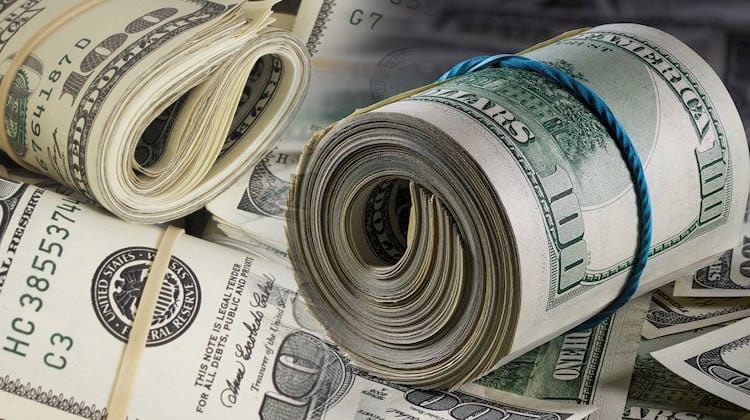The United States dollar fell on Tuesday as new economic data — much of it delayed by the recent government shutdown — supported expectations that the Federal Reserve may cut interest rates next month. The currency weakened against its major counterparts as investors reacted to soft retail sales, mild inflation numbers and declining consumer confidence.
In late-morning U.S. trading, the euro rose by 0.5 per cent to $1.1577 while the British pound gained 0.6 per cent to trade at $1.3184. The dollar index, which tracks the value of the U.S. currency against major global currencies, dropped by 0.5 per cent to 99.746. This decline came shortly after the index gained nearly one per cent last week.
Financial analysts said the fresh data paints a picture of an economy losing some momentum. Scott Helfstein, head of investment strategy at Global X, said the stability in producer prices and the slowdown in retail sales “keeps a December rate cut on the table.” His comments followed broader market reactions showing growing confidence that the Federal Reserve may move ahead with monetary easing before the end of the year.
According to the latest numbers, retail sales in the U.S. climbed by 0.2 per cent in September. This was weaker than the 0.4 per cent increase projected by economists surveyed by Reuters. It also slowed from the revised 0.6 per cent growth recorded in August. Analysts said the decline reflects cautious spending by households due to economic uncertainty and concerns about inflation.
Producer price data also showed mild pressure. Prices rose by 0.3 per cent in September, aligning with market expectations. At the core level, which excludes volatile items, prices increased by only 0.1 per cent, below the forecast of 0.2 per cent. This weaker-than-expected core number supported the view that inflation may be cooling.
Another key indicator that weakened the dollar was the fall in U.S. consumer confidence. The latest index dropped to 88.7 in November from 95.5 in October, the lowest level in several months. Economists had expected a smaller decline to 93.4. Analysts said more Americans are worried about the future, leading many to delay major purchases.
Jennifer Lee, senior economist at BMO, said consumers are showing “more worries about what lies ahead,” which is contributing to weaker demand for big-ticket items. This, combined with earlier inflation pressures, is contributing to a softer economic outlook.
The market reaction was further shaped by recent dovish remarks from senior Federal Reserve officials. Fed Governor Christopher Waller said on Monday that the U.S. labour market has weakened enough to justify another quarter-point rate cut in December. He also noted that additional action would depend on economic data that was delayed due to the federal government shutdown, which ended on 14 November.
His statement came after similar comments by New York Federal Reserve President John Williams. These remarks have pushed traders to increase their bets on a December rate cut. According to the CME FedWatch tool, the probability of a cut next month rose to 83 per cent, up sharply from 50 per cent just one week earlier.
Francesco Pesole, a currency strategist at ING, said year-end trading patterns may be affecting market movements, with some investors adjusting their positions before the Thanksgiving holiday. He added that the dollar still appears “too strong relative to short-term rate differentials,” and warned that the currency faces “material downside risks” unless markets shift to a more hawkish outlook.
In the broader currency market, the Japanese yen strengthened on Tuesday after hitting 10-month lows last week. The yen traded at 156.055 per dollar, with the U.S. currency falling by 0.5 per cent. Investors have been monitoring the Japanese government for signs of intervention to support the currency, which has fallen sharply since October after Prime Minister Sanae Takaichi adopted more flexible fiscal policies.
Pesole said the period of thin liquidity during the Thanksgiving holiday in the U.S. could offer favourable conditions for the Bank of Japan to intervene in the currency market, especially if there is a market-led correction in the USD/JPY pair.
The dollar’s decline underscores the sensitivity of global markets to U.S. economic indicators and central bank signals. Analysts said the next few weeks will be critical as traders await more data and prepare for the final Federal Reserve meeting of the year.
